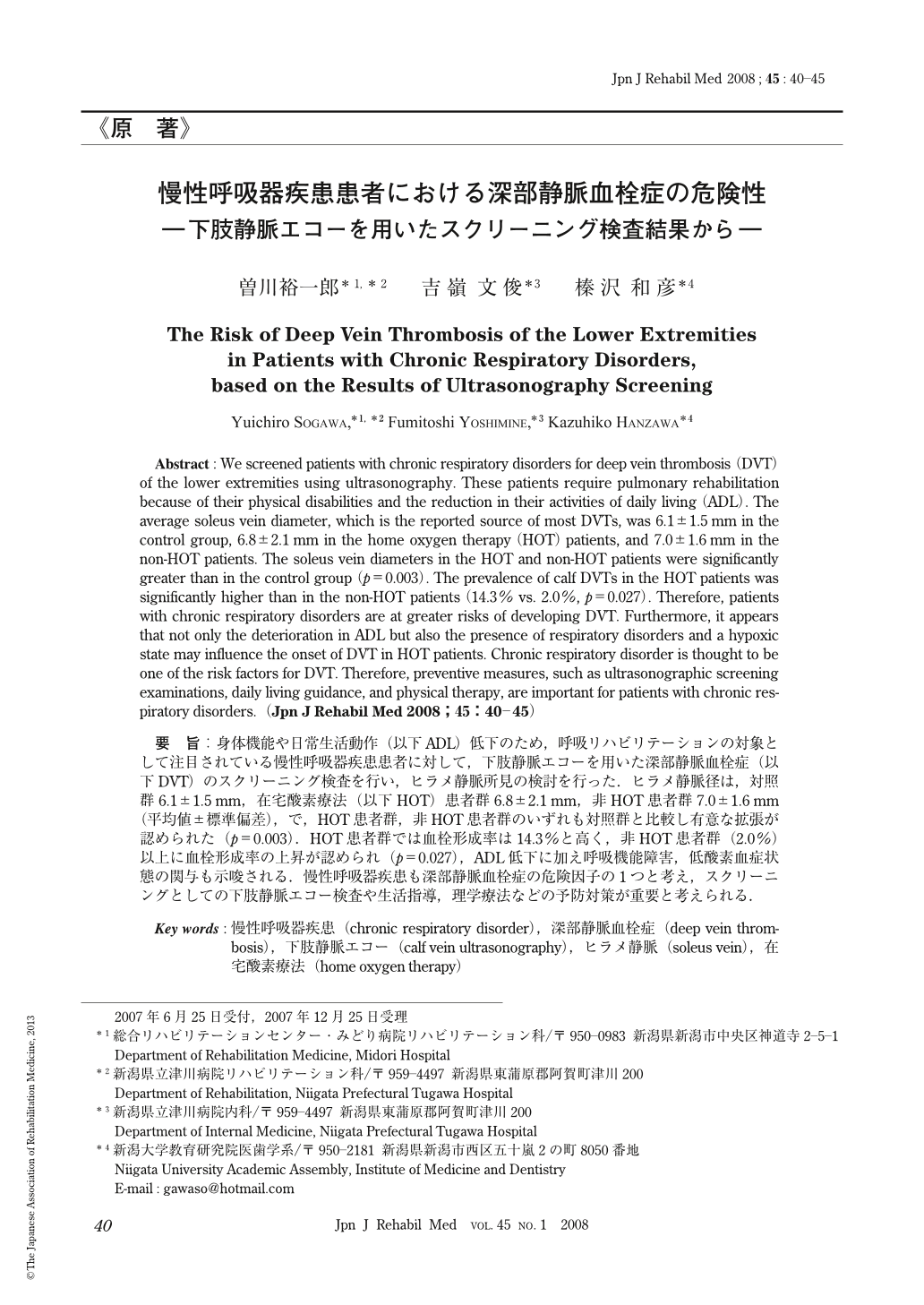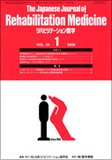Japanese
English
- 販売していません
- Abstract 文献概要
- 1ページ目 Look Inside
- 参考文献 Reference
要旨:身体機能や日常生活動作(以下ADL)低下のため,呼吸リハビリテーションの対象として注目されている慢性呼吸器疾患患者に対して,下肢静脈エコーを用いた深部静脈血栓症(以下DVT)のスクリーニング検査を行い,ヒラメ静脈所見の検討を行った.ヒラメ静脈径は,対照群6.1±1.5mm,在宅酸素療法(以下HOT)患者群6.8±2.1mm,非HOT患者群7.0±1.6mm(平均値±標準偏差),で,HOT患者群,非HOT患者群のいずれも対照群と比較し有意な拡張が認められた(p=0.003).HOT患者群では血栓形成率は14.3%と高く,非HOT患者群(2.0%)以上に血栓形成率の上昇が認められ(p=0.027),ADL低下に加え呼吸機能障害,低酸素血症状態の関与も示唆される.慢性呼吸器疾患も深部静脈血栓症の危険因子の1つと考え,スクリーニングとしての下肢静脈エコー検査や生活指導,理学療法などの予防対策が重要と考えられる.
Abstract : We screened patients with chronic respiratory disorders for deep vein thrombosis (DVT) of the lower extremities using ultrasonography. These patients require pulmonary rehabilitation because of their physical disabilities and the reduction in their activities of daily living (ADL). The average soleus vein diameter, which is the reported source of most DVTs, was 6.1±1.5mm in the control group, 6.8±2.1mm in the home oxygen therapy (HOT) patients, and 7.0±1.6mm in the non-HOT patients. The soleus vein diameters in the HOT and non-HOT patients were significantly greater than in the control group (p=0.003). The prevalence of calf DVTs in the HOT patients was significantly higher than in the non-HOT patients (14.3% vs. 2.0%, p=0.027). Therefore, patients with chronic respiratory disorders are at greater risks of developing DVT. Furthermore, it appears that not only the deterioration in ADL but also the presence of respiratory disorders and a hypoxic state may influence the onset of DVT in HOT patients. Chronic respiratory disorder is thought to be one of the risk factors for DVT. Therefore, preventive measures, such as ultrasonographic screening examinations, daily living guidance, and physical therapy, are important for patients with chronic respiratory disorders.

Copyright © 2008, The Japanese Association of Rehabilitation Medicine. All rights reserved.


